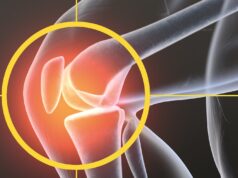
Musculoskeletal (MSK) embolization—including techniques such as transarterial microembolization (TAME) and genicular artery embolization (GAE)—has emerged as a novel, minimally invasive treatment for chronic joint and tendon pain. Initially applied to conditions such as knee osteoarthritis (OA), frozen shoulder, and tendinopathies, these procedures target hypervascular inflammation, a key contributor to chronic MSK symptoms. While early data are promising, the field is still maturing. Here, Gerard Goh (Alfred Hospital, Melbourne, Australia) and Yuji Okuno (Okuno Clinic, Tokyo, Japan) collaborate to raise several critical questions that, at present, remain unanswered.
Top 5 unanswered questions
- Generating high-quality evidence
To date, much of the literature on MSK embolization consists of case series and single-arm studies. While these have reported significant reductions in pain and improvements in function, randomised controlled trials (RCTs) remain limited. Notably, the few RCTs published have produced mixed results—one demonstrated clinical benefit, while another showed no significant difference from placebo.1,2 These findings raise concerns about placebo effects and highlight the need for more rigorous evidence. Larger trials in the UK, France, and US are ongoing and may help define the clinical value of these procedures.3,4,5
- Optimising indications and patient selection
Knee OA is a heterogeneous disorder with varying underlying causes and pathologies. While GAE appears beneficial for many, it is still unclear which patients are most likely to respond. Pre-procedural magnetic resonance imaging (MRI) findings have shown potential in predicting outcomes, but reliable imaging-based criteria for patient selection remain underdeveloped.6,7 Similar uncertainties exist for other conditions such as frozen shoulder and sports-related injuries, where the roles of contrast-enhanced MRI and other imaging modalities are still being clarified.
Additionally, as pain is a subjective experience, psychological factors such as catastrophising, anxiety, and depression may influence outcomes. These aspects should be considered in future studies aimed at refining patient selection frameworks.
- Improving outcome assessment methods
Pain assessment traditionally relies on tools such as the Visual Analog Scale (VAS) and Numerical Rating Scale (NRS), which capture pain at a single time point. However, these tools are susceptible to environmental and emotional factors, leading to variability. Broader functional scoring systems—such as Western Ontario and McMaster Universities Osteoarthritis Index (WOMAC) or Knee Injury and Osteoarthritis Outcome Score (KOOS)—offer more comprehensive evaluations but depend on retrospective recall and may introduce bias.
Emerging approaches like Ecological Momentary Assessment (EMA) allow for multiple real-time inputs, providing more granular insights into daily symptom variability. Likewise, wearable devices can objectively track activity levels and function. Integrating these multidimensional tools into outcome assessment may improve the reliability and relevance of future research.
- Refining embolic materials and techniques
One consistent finding in the literature is that embolic materials smaller than 100 micrometers are associated with higher complication rates, irrespective of whether they are temporary or permanent. Beyond this, however, consensus on the optimal type of embolic agent is lacking.
Temporary embolic agents are widely regarded for their safety, while permanent agents may offer longer-lasting benefits, particularly in progressive conditions like knee OA. Some propose combining both— utilising the short-term safety of temporary materials with the durable effects of permanent embolics. This hybrid approach could offer a balanced therapeutic profile.
Outside the knee, evidence is even scarcer. Recent findings suggest that in the elbow joint, using smaller embolic volumes can minimise complications and enhance clinical results. As the field evolves, tailored strategies for each joint and disease type must be developed, accounting for anatomical and physiological nuances.
- Clarifying long-term outcomes
While many patients report sustained symptom relief for up to two years post-embolization, data on long-term durability remain sparse. It is unclear whether embolization alters the course of disease or simply provides temporary relief. Key questions remain: Can embolization delay or prevent joint replacement surgery? What is the efficacy of repeat embolizations? And how does embolization affect joint structure over time?
To address these, extended follow-up of existing cohorts and the establishment of prospective registries will be critical. Understanding long-term safety and efficacy will determine the role of MSK embolization in the treatment continuum.
MSK embolization is an innovative and promising addition to the therapeutic arsenal for chronic musculoskeletal pain. Offering a minimally invasive, targeted alternative for patients unresponsive to conservative care, it has the potential to bridge the gap between medication and surgery. However, its future depends on addressing key uncertainties through robust clinical trials, refined patient selection, optimized embolic techniques, and comprehensive long-term data. The next few years will be pivotal in determining whether MSK embolization becomes a standard of care or remains a specialised intervention for select cases.
Gerard Goh is an interventional radiologist at the Alfred Hospital in Melbourne, Australia and Yuji Okuno is an interventional radiologist at the Okuno Clinic in Tokyo, Japan.
References
- Bagla S, Piechowiak R, Sajan A, et al. Multicenter Randomized Sham Controlled Study of Genicular Artery Embolization for Knee Pain Secondary to Osteoarthritis. J Vasc Interv Radiol. 2022 Jan;33(1):2- 10.e2
- van Zadelhoff TA, Bos PK, Moelker A, et al. Genicular artery embolisation versus sham embolisation for symptomatic osteoarthritis of the knee: a randomised controlled trial. BMJ Open. 2024 Oct 1;14(10):e087047.
- Little MW, Harrison R, MacGill S, et al. Genicular Artery Embolisation in Patients with Osteoarthritis of the Knee (GENESIS 2): Protocol for a Double-Blind Randomised Sham-Controlled Trial. Cardiovasc Intervent Radiol. 2023 Sep;46(9):1276-1282.
- https://www.centerwatch.com/clinical-trials/ listings/NCT06497140/effect-of-genicular-arteries-embolization-in-symptomatic-knee-osteoarthritis-lipiojoint-2/effect-of-genicular-arteries-embolization-in-symptomatic-knee-osteoarthritis-lipiojoint-2
- https://www.cms.gov/httpswwwcmsgovmedic arecoverageideapproved-ide-studies/g200303- nct04682652
- van Zadelhoff TA, Okuno Y, Bos PK, et al. Association between Baseline Osteoarthritic Features on MR Imaging and Clinical Outcome after Genicular Artery Embolization for Knee Osteoarthritis. J Vasc Interv Radiol. 2021 Apr;32(4):497-503.
- Choi JW, Ro DH, Chae HD, et al. The Value of Preprocedural MR Imaging in Genicular Artery Embolization for Patients with Osteoarthritic Knee Pain. J Vasc Interv Radiol. 2020 Dec;31(12): 2043-2050.









